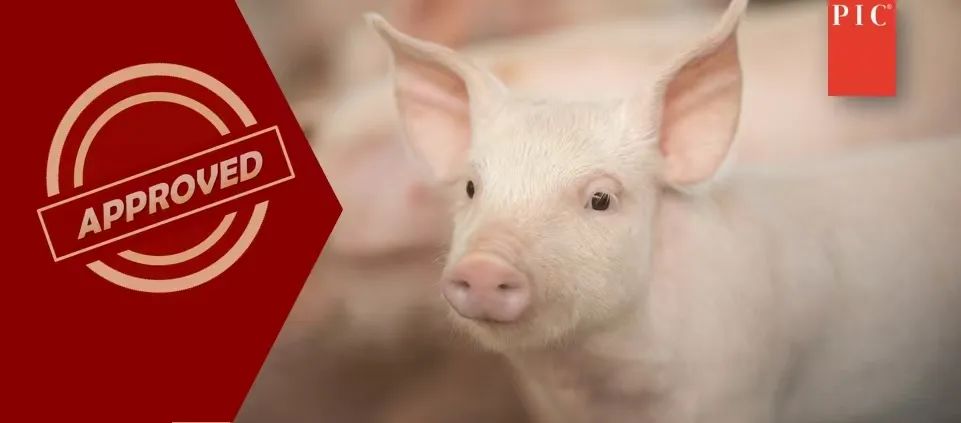天生免疫蓝耳病的猪即将来临!

---- 广告,也是一种资讯----
猪蓝耳病,是由猪繁殖与呼吸综合征病毒(PRRSV)引起的一种急性、高度接触性传染病,可造成母猪流产、仔猪死亡。
几年前,一家名为Genus的英国公司开始尝试利用CRISPR基因编辑技术,对猪进行改造,这样,猪就可以天生免疫蓝耳病病毒。目前,这项技术已经获得成功,并于上周拿到了美国食品药品监督管理局(FDA)批准,"科技猪肉"即将端上餐桌了。
 (图片来源:MIT Technology Review)
(图片来源:MIT Technology Review)
Genus 团队的核心技术源于对CD163基因功能的深度解析。科研人员采用CRISPR-Cas9基因编辑系统,通过显微注射方式将基因剪刀精准导入猪胚胎细胞。实验聚焦于特异性切除CD163基因中负责编码病毒结合区域的关键外显子片段,这种靶向修饰在消除致病风险的同时完整保留了该基因的其他生理功能。为确保遗传改造的可靠性,研究团队建立了三重质控体系:通过全基因组测序验证基因编辑位点的精确性,筛查排除非特异性基因剪切现象,并通过遗传标记分析维持种群基因库的生物多样性。通过严格生物安全评估的基因改良种猪将进入核心育种体系,最终培育出具备先天抗PRRS病毒能力的优质种猪资源。
Genus子公司PIC首席运营官Matt Culbertson称,这些基因编辑猪对超过99%的已知猪蓝耳病毒变种完全免疫,目前只有一种罕见亚型可能突破防护。
全球动物蛋白来源中,鸡肉居首,猪肉和牛肉分列二、三位。2023年报告显示,猪肉占全球肉类消费总量的34%。全球约10亿头猪中,多数在中国(约7亿头),美国以8000万头位居第二。在美国,猪蓝耳病每年造成至少3亿美元损失,蓝耳免疫猪可大幅节省成本。
 (图片来源:MIT Technology Review)
(图片来源:MIT Technology Review)
目前,科学家们还在研究让猪和其他家畜对非洲猪瘟、猪流感等疾病免疫。虽然蓝耳病不传人,但猪流感和禽流感等疾病可能传染人类。若牲畜能通过基因编辑抵抗此类病毒,将减少病原体跨物种传播引发大流行的风险。
Genus表示,在向养猪场推广前,需先获得墨西哥、加拿大、日本和中国(美国猪肉的主要出口市场)的监管批准。Matt Culbertson透露,基因编辑猪肉或于明年登陆美国市场。他称,公司认为无需在猪排或其他产品上标注“BE(生物工程:转基因和基因编辑)”标签。“我们没有收到相关要求。”他补充道。
部分原文:
Most pigs in the US are confined to factory farms where they can be afflicted by a nasty respiratory virus that kills piglets.The illness is called porcine reproductive and respiratory syndrome, or PRRS.
A few years ago, a British company called Genus set out to design pigs immune to this germ using CRISPR Not only did they succeed, but its pigs are now poised to enter the food chain following approval of the animals this week by the U.S. Food and Drug Administration.
The pigs will join a very short list of gene-modified animals that you can eat.It’s a short list because such animals are expensive to create, face regulatory barriers, and don’t always pay off. For instance, the US took about 20 years to approve a transgenic salmon with an extra gene that let it grow faster.But by early this year its creator, AquaBounty, had sold off all its fish farms and had only four employees—none of them selling fish.
Regulations have eased since then, especially around gene editing, which tinkers with an animal’s own DNA rather than adding to it from another species, as is the case with the salmon and many GMO crops.
What’s certain is that the pig project was technically impressive and scientifically clever.Genus edited pig embryos to remove the receptor that the PRRS virus uses to enter cells.No receptor means no infection.
According to Matt Culbertson, chief operating office of the Pig Improvement Company, a Genus subsidiary, the pigs appear entirely immune to more than 99% of the known versions of the PRRS virus, although there is one rare subtype that may break through the protection.
That experiment on humans was widely decried as misguided.But pigs are a different story. The ethical concerns about experimenting are less serious, and the benefits of changing the genomes can be measured in dollars and cents. It’s going to save a lot of money if pigs are immune to the PRRS virus, which spreads quite easily, causing losses of $300 million a year or more in the US alone.
Globally, people get animal protein mostly from chickens, with pigs and cattle in second and third place. A 2023 report estimated that pigs account for 34% of all meat that’s eaten. Of the billion pigs in the world, about half are in China;the US comes in a distant second, with 80 million.
Recently, there’s been a lot of fairly silly news about genetically modified animals.A company called Colossal Biosciences used gene editing to modify wolves in ways it claimed made them resemble an extinct species, the dire wolf. And then there’s the L.A. Project, an effort run by biohackers who say they’ll make glow-in-the-dark rabbits and have a stretch goal of creating a horse with a horn—that’s right, a unicorn.
Both those projects are more about showmanship than usefulness.But they’re demonstrations of the growing power scientists have to modify mammals, thanks principally to new gene-editing tools combined with DNA sequencing that lets them peer into animals’ DNA.
Stopping viruses is a much better use of CRISPR.And research is ongoing to make pigs—as well as other livestock—invulnerable to other infections, including African swine fever and influenza. While PRRS doesn’t infect humans, pig and bird flus can. But if herds and flocks could be changed to resist those infections, that could cut the chances of the type of spillover that can occasionally cause dangerous pandemics.
There’s a chance the Genus pigs could turn out to be the most financially valuable genetically modified animal ever created—the first CRISPR hit product to reach the food system. After the approval, the company’s stock value jumped up by a couple of hundred million dollars on the London Stock Exchange.
But there is still a way to go before gene-edited bacon appears on shelves in the US. Before it makes its sales pitch to pig farms, Genus says, it needs to also gain approval in Mexico, Canada, Japan and China which are big export markets for American pork.
Culbertson says gene-edited pork could appear in the US market sometime next year. He says the company does not think pork chops or other meat will need to carry any label identifying it as bioengineered."We aren't aware of any labelling requirement," Culbertson says.
译自:MIT Technology Review
⇩⇩⇩
如在小程序使用中有任何建议和反馈,欢迎后台留言。
期待与您面对面地交流!
往期回顾








{{item.content}}